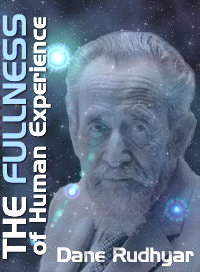 |
| Home | Bio | Art | Music | Literature | Civilization & Culture | Philosophy of Wholeness | Theosophy & Spirituality | Astrology |

CHAPTER SEVEN
A New Frame of Reference: The Earth-being & the Function of Humanity within It - 8 The relation of culture to continent Every level of activity of the' Earth-being is related to every other. The shaping of the materials of the planetary globe at its surface where it reacts to solar and galactic radiations follows rhythms to which present-day geologists cannot give a purposeful evolutionary meaning. Being modern scientists, they build complex and attractive theories, such as the theory of plate tectonics, to explain the formation of present-day continents and their mountains, but they cannot relate the results of the motion of these large masses of matter to the conditions of life which will develop on land or in the ocean — conditions which in turn will make characteristic types of cultures possible. For the geo-scientist, the shapes of the earth's surface — the geomorphism of continents and seas — are not related to the development of biology and culture which will occur in the biosphere. There can be no relation because the gradual evolution of matter, life, and culture is not understood as one vast evolutionary process. This process can hardly constitute a consistent and purposeful scheme of development unless it is given meaning in terms of a planetary frame of reference; thus, in relation to an Earth-being in which (or whom) continents, biological species, human cultures and persons participate, each affecting the others to some extent It is not only that science is concerned with the "how" and not the "why" of existence. The "how" it studies is fragmentary. Only a vision of the wholeness of a whole can reveal the reality of the interactions of its parts by giving them a functional significance. The biosphere is the first whole to be considered. It includes three main components: the large expanse of water (roughly three-fifths of the earth's surface), the land masses (continents and islands), and the atmosphere surrounded by the stratosphere and still more tenuous layers of substance, reaching to circum-planetary regions filled with electromagnetic particles (ionosphere, etc.). It seems that originally the globe was entirely covered with water, and then gradually masses of molten materials emerged to form what now constitute our continents. When we look at a global map we are used to seeing several distinct continents, as well as names given to several oceans and seas (Atlantic, Pacific, Indian, etc.). Yet in fact there is only one ocean. It is only because we see it from the perspective of the continental regions bordering it that we use different names for this one, single expanse of water. Land-areas have developed according to the rhythm of multiplicity, but the ocean remains the one basic foundation of terrestrial existence. In a still more evident manner the earth's atmosphere is one single whole. All living organisms breathe this same air which circulates rapidly around the globe. All human beings are indeed united, in the very depth of their biological nature (in their lungs), by this one atmosphere they have to breathe. We might not wish to have tactual relationships with some human beings of another color, race or class, but we breathe the same air, whether or not we are conscious of or like the fact. Therefore, when a civilization pollutes what it may still call its own atmosphere, it in fact poisons the entire gaseous realm of the biosphere, while the waste-products of European, American, and now Asian factories are filling the one worldwide ocean. What were once considered several distinct continents may initially have been one single land mass. But traditions and modern theories present several different pictures. The relatively recent theory of plate tectonics has its critics, and the manner in which vast masses of matter have risen from the molten depths of the planet is a controversial issue. Nevertheless it seems evident that continents are drifting and that the geomorphic features of land and sea are very slowly but continuously changing — and some theories give the process of transformation a periodically catastrophic character.(1) The idea of drifting continents apparently had been suggested by Francis Bacon and the French naturalist Buffon, but the theory of plate tectonics was developed during this century, at first by a Danish geographer Alfred Wegener. He believed that all present-day continents once formed a huge mass he called Pan-Gaea. This continental mass then divided into what are now known as Eurasia, Africa, Antarctica, Australia and the Americas. Wegener s theory was later reformulated and two original land masses were postulated instead of one. The northern continental group centered around Greenland was called Laurasia, and the southern one around Antarctica was called Gondwana. As these two masses moved in opposite directions and (one might say) attacked each other, heavy geological disturbances occurred such as earthquakes and volcanic eruptions. Their powerful horizontal embrace gave rise to vertically surging high mountain ranges. Then the two masses apparently bounced away from each other. They remained separated during a long period of quiescence, and the conflict began again. Several periods of intense mountain-creating occurred. They led to the formation of the Laurentian mountains of Canada about one billion years ago. Another group of Canadian and Midwestern United States mountains, now largely flattened, were formed half a billion years afterward. Then the Appalachian mountains of North America, and finally (some 150 million years ago) the Alps, the Himalayas, the Rocky mountains, and the Andes. This last upheaval occurred during the Cretaceous Age which theoretically began about 125 million years ago; and it may not yet be ended, as several mountain peaks (for instance Mount Everest) are still rising. The idea of two continental plates moving toward each other as integral units and colliding rather spectacularly nevertheless is not universally accepted. Some geologists believe that what travels from one region of the globe to another is a number of small masses breaking off from their region of origin, and somehow being pulled by and integrating themselves with the much larger land formations. These small wandering masses, imbedded at the margin of continents, are called "terranes." They are identified by geologists because their composition and the fossils they contain do not match those of their geological surroundings. David Howell of the United States Geological Survey believes that the movements of the terranes are "the only process involved at a fundamental level determining the growth and shape of continents." The basic question, however, at least from the point of view I have adopted, is not how the process of formation of our present continents occurred, but the meaning its results have had and are having in terms of the development of the Earth-being at all levels of existence — and of course more specifically at the human level. At that level, biology is the foundation of cultures and personhood. Can we actually relate the shape of continental landmasses and islands to the kind of culture that has developed at their surface? We know how cultures are affected by the climate, the resources of the land and the behavior of all that lives on it, but is there a morphological relationship between, on the one hand, the shape of the land and its location within a continental mass, and on the other hand the type of culture born in that region? 1. For a popularized compendium and discussion of the various theories see John White's book Poleshift (Doubleday, New York, 1980). Return By permission of Leyla Rudhyar Hill Copyright © 1986 by Leyla Rudhyar Hill All Rights Reserved.  Web design and all data, text and graphics appearing on this site are protected by US and International Copyright and are not to be reproduced, distributed, circulated, offered for sale, or given away, in any form, by any means, electronic or conventional. See Notices for full copyright statement and conditions of use. Web design copyright © 2000-2004 by Michael R. Meyer. All Rights Reserved. |
 |
